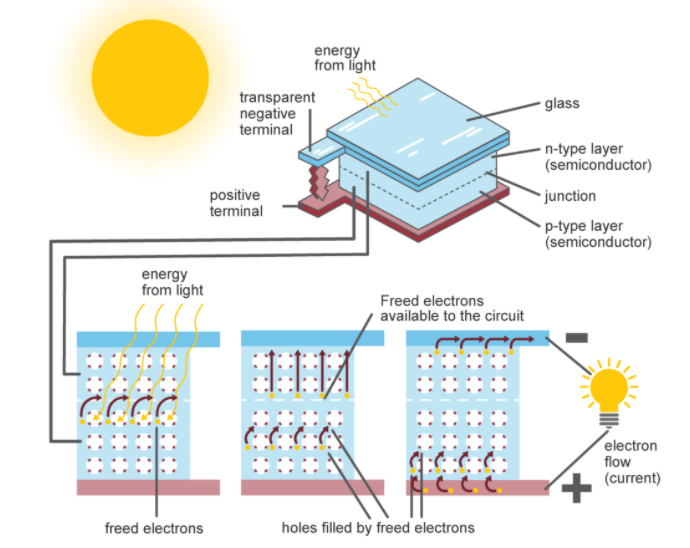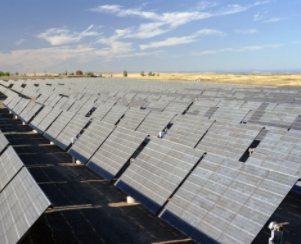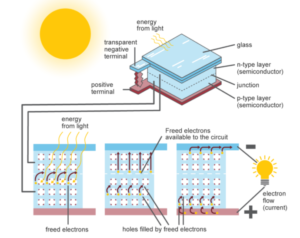

The efficiency of photovoltaic systems varies by the type of photovoltaic technology
The efficiency at which PV cells convert sunlight to electricity varies by the type of semiconductor material and PV cell technology. The efficiency of commercially available PV modules averaged less than 10% in the mid-1980s, increased to around 15% by 2015, and is now approaching 20% for state-of-the art modules. Experimental PV cells and PV cells for niche markets, such as space satellites, have achieved nearly 50% efficiency.
How photovoltaic systems operate
The PV cell is the basic building block of a PV system. Individual cells can vary in size from about 0.5 inches to about 4 inches across. However, one cell only produces 1 or 2 Watts, which is only enough electricity for small uses, such as for powering calculators or wristwatches.
PV cells are electrically connected in a packaged, weather-tight PV module or panel. PV modules vary in size and in the amount of electricity they can produce. PV module electricity generating capacity increases with the number of cells in the module or in the surface area of the module. PV modules can be connected in groups to form a PV array. A PV array can be composed of two or hundreds of PV modules. The number of PV modules connected in a PV array determines the total amount of electricity the array can generate.
Photovoltaic cells generate direct current (DC) electricity. This DC electricity can be used to charge batteries that, in turn, power devices that use direct current electricity. Nearly all electricity is supplied as alternating current (AC) in electricity transmission and distribution systems. Devices called inverters are used on PV modules or in arrays to convert the DC electricity to AC electricity.
PV cells and modules will produce the largest amount of electricity when they are directly facing the sun. PV modules and arrays can use tracking systems that move the modules to constantly face the sun, but these systems are expensive. Most PV systems have modules in a fixed position with the modules facing directly south (in the northern hemisphere—directly north in the southern hemisphere) and at an angle that optimizes the physical and economic performance of the system.




